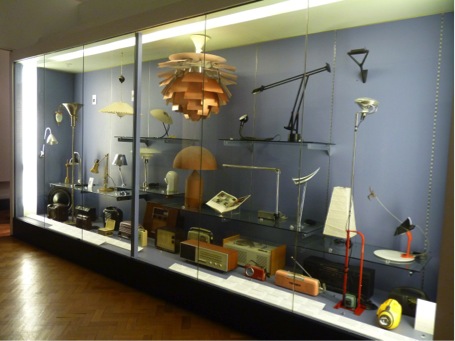May’s blog posts are a ‘spotlight on SEAHA’ in preparation for the upcoming 2nd International SEAHA Conference in June. The posts will highlight SEAHA student research with the first post ‘Spotlight on Plastics’ from Anna Pokorska, Postgraduate Research Student, Institute for Sustainable Heritage, UCL.
Spotlight on Plastics
By Anna Pokorska, Postgraduate Research Student, Institute for Sustainable Heritage, UCL
Plastic materials have quickly become ubiquitous in our everyday lives, from ordinary use objects to high value works of art and design. They also have a contradictory reputation – on one hand plastics are thought of as durable due to the fact that they do not biodegrade. However, they are also often used as temporary and cheap substitutes for more valuable materials and not expected to last as long. In fact, the early plastics have intrinsic flaws which contribute to their degradation due to the largely experimental character of their production. Nevertheless, plastic objects of both natures can now be found in heritage collections. Artists and designers have also happily experimented with the use of the materials creating innovative artworks but also, at the same time, considerable challenges to conservators. Another critical issue is the sheer amount of different plastics and their combinations with various additives now available. However, in recent decades there has been a lot of research carried out in the field of conservation of these materials. Contributing to that movement is a project based at the Institute for Sustainable Heritage (ISH) at UCL which will investigate the stability of plastics to visible light as encountered in a museum or gallery environment.

It is common knowledge that UV radiation is harmful to most materials and is therefore filtered out in heritage institutions. However, the sensitivity of various types of plastic formulations to visible light is not that well understood and consequently museum lighting guidelines for them remain somewhat vague and under-researched. Through collaboration with the Victoria and Albert Museum and Philips, the most up-to-date knowledge of plastic degradation and preservation will be brought together with cutting-edge lighting technology research. The main goal of this project will be to identify the long-term effect of visible light on the physical appearance and chemical structure of modern materials. Aspects of deterioration such as discolouration and crazing will be related to changes in the molecular structure of the materials thus increasing our understanding of the processes and visual impact of light-induced degradation.

A wide range of plastic types which will be tested will help identify those that may be sensitive to visible light exposure and dispel some of the contrasting results found in research so far. Following from that the project will focus more closely on the individual contribution of different parts of the visible light spectrum towards plastic decay. This will not only further expand our knowledge of light degradation but may also present an opportunity to reduce some of that damaging potential and preserve plastic artefacts for longer. The results from this project will also contribute towards improving lighting guidelines for display of plastic objects in collections by providing more specific recommendations for particular formulations as well as help define a more robust methodology for future studies.
SEAHA, the EPSRC Centre for Doctoral Training in Science and Engineering in Arts Heritage and Archaeology, is a unique initiative that brings together academic, heritage and industry partners over an 8 year period (2014-2022) to meet challenges set by the heritage sector, industry and government.
SEAHA will hold its second international conference in Oxford on 20th-21st June. Alongside keynote speakers Sir Philip Campbell (Editor-in-Chief, Nature), Dr Ewan Hyslop (Head of Technical Research and Science, Historic Environment Scotland) and Dr Philippe Walter (Head of Laboratory of Molecular and Structural Archaeology, Sorbonne Universites, CNRS, UPMC), many of the SEAHA students will be presenting their work.
To find out more about the conference, visit www.seaha-cdt.ac.uk/seaha-conference-2016/
